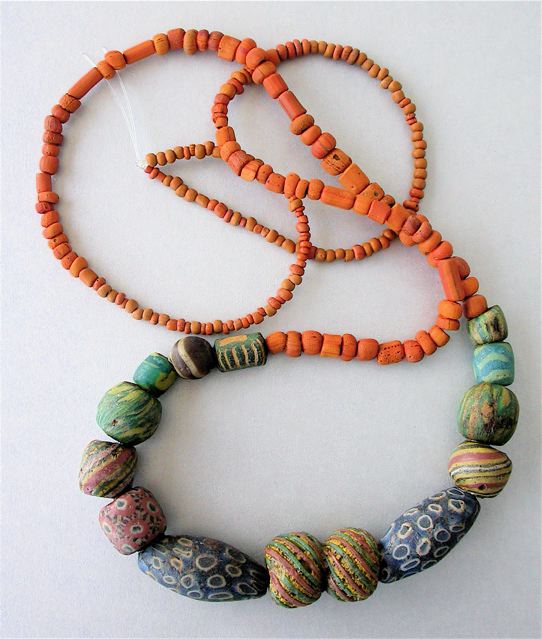| Re: Byzantine | |||||
| Re: Byzantine vs. Islamic Era beads -- Frederick II | Post Reply | Edit | Forum | Where am I? | |
10/28/2014, 14:09:30
I think almost all of these bead designs originated in the Byzantine period, though many of them continued to be made under the area's new Islamic rulers, after the conquest of most of the bead-making centres in West Asia and North Africa in the 730s.
My main reason for saying this is the influence that these kinds of beads had on bead-making in Java. We know, from James Lankton's essay, "How does a Bead Mean?" in the proceedings of the International Bead and Beadmaking Conference in Istanbul, that the most beautiful of all Jatim beads, National Treasure #634, was excavated from a Silla Kingdom royal grave in Korea which can be dated to the late 5th to early 6th century CE - that is, more than 100 years before Muhammad began formulating the precepts of Islam and more that 200 years before the fall of Sidon and Alexandria to Moslem armies.
NT634, with its face and bird canes, represents the height of Javanese bead-making skills and clearly a substantial period of time before its manufacture and export must have elapsed in order to develop this strange and amazing technology at the local level. Jatim twisted beads and/or eye beads were exported from East Java to the Philippines, the Funan kingdom in present-day Vietnam and Cambodia, and to Thailand in the fifth century, and probably (at least in the case of the spherical twisted-stripe beads) even before that time. At the other end of their short history, by about 550, with a shift of regime in East Java, the bead-making industry appears to have died out.
But those Jatim beads didn't occur on their own; in their design, but not their technology, they are obviously based on West Asian models. I'm going to attach a strand of beads that I got on one of my recent trips to Java. They were a gift from a friend, a coin collector in Bandung, who said they came from a site in northern Central Java. They're very similar to two strands on page 90 of Jamey Allen's Magical Ancient Beads. Almost all of them, if we go by appearances, might have been made in West Asia. Almost all of them - possibly all - if we look at how they were made, come from workshops in Java. To put it another way, if we look at the canes in the "Islamic or Byzantine" beads we're talking about, all of them were known to glass-makers several thousand miles away in Java in the fifth century.
So if we allow for a sufficient lapse of time for them to be made, to become popular, and to find their way over such a long distance, we could easily be looking at a date for their initial manufacture in the late 300s - 250 years before the Islamic period began. But of course, they were enormously desirable beads that were produced over several hundred years, so the beads in the picture could have been made in Islamic times. I don't like the term "Islamic" for beads, anyway - it's a bit like inventing an unnecessary category called "Christian" for Venetian and Bohemian and Dutch beads! And in this case, I think Byzantine is a much better description of the beads we're talking about, because that is when and where they were first made.
Best wishes,
Will

|